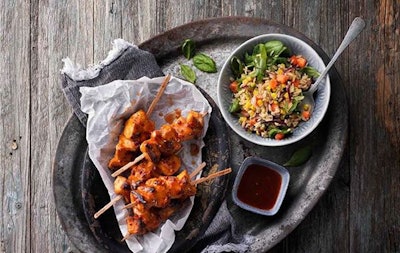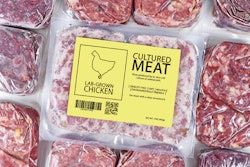
Scandi Standard didn't close the 2021 fiscal year as well as hoped, but some changes coming in 2022 could reverse those fortunes.
At constant exchange rates, net quarterly sales for Scandi Standard were up 1% year-on-year to 2.435 billion Swedish krona (SEK; US$259 million). This covered the period from October to December of 2021 in results for the fourth quarter and full fiscal year just published.
Despite higher sales, operating income — expressed as Earnings Before Interest and Taxes (EBIT) — slipped by 47% to SEK30 million. This corresponded to a drop in margin from 2.3% in the same period of 2021 to 1.2%. Meanwhile, adjusted EBIT fell by 96% year-on-year to just SEK3 million.
2021 full year results
For the full fiscal year ended December 2021, Scandi Standard achieved an increase in net sales of 3% to SEK10.1 billion. This figure was calculated on constant exchange rates.
However, as for the fourth quarter, operating income figures were lower than in the 2020 financial year. While EBIT margin dropped from 3.5% to 2.2%, operating income was SEK222 million. This compared with SEK351 million for the previous year. At SEK213 million, adjusted EBIT was down 48%, and the corresponding margin was 2.1% — down from 4.1% for 2020.
Scandi Standard reported income for the year just ended of SEK103 million, while operating cash flow amounted to SEK347 million. For the previous year, the figures were SEK208 million, and SEK476 million, respectively.
Compared with SEK3.16 in 2020, earning per share were SEK1.60 for the 2021 fiscal year.
Business segment challenges
Commenting on these latest results, interim managing director and CEO Otto Drakenberg highlighted that fourth-quarter sales were overall broadly in line with the previous year.
However, both adverse external and internal factors affected particularly Scandi Standard’s ready-to-cook (RTC) business. With net sales of almost SEK1.79 billion, operating income for this segment made a loss of SEK32 million. Contributing to this deterioration were a significant rise in key input costs, and strong price competition in export markets, as well as cuts to production at the firm’s production sites in Sweden and the Republic of Ireland. According to Drakenberg, major losses amounting to SEK59 million were incurred by the Danish RTC business.
In contrast, the company’s ready-to-eat (RTE) segment achieved a 14% increase in net sales to SEK543 million. Main driver was a boost in sales through food service.
Already at the end of last year, Scandi Standard initiated a widespread program to return to group-wide profitability. At the outset, an action plan focused on improving both commercial and operational efficiency in all its markets. Over the last quarter, prices were adjusted in all countries, and costs reduced. Furthermore, measures were taken to improve profitability in the RTC segment in Denmark. For Sweden and Ireland, production challenges were addressed.
New organization, investments
Among the organizational changes have been the appointment of new country managers in Denmark, Finland, and Ireland, while the Swedish market is covered by the manager in Norway.
Already a profitable sales channel, Scandi Standard plans to take up more of its available capacity this year, and invest in further expanding its RTE production capacity in Farre (Denmark).
Currently, the investment plan amounts to SEK330 million, but this will be reviewed in the light of business developments throughout the coming year.
Priority will be given to profitable growth in the RTE segment, and initiating the roll-out of a new Enterprise Resource Planning (ERP) system. Aims of the latter system is to drive efficiencies in the value chain in the long term, harmonize business processes, and increase automation across the company.
Scandi Standard reports selected sustainability KPIs
Presented along with the group’s latest results were several key performance indicators (KPIs) linked to sustainability.
On animal welfare, it was noted that broiler foot pad scores were in line with the expectations of a market leader. Despite cold and wet weather, the score for fourth quarter was similar to the same period of 2020.
A year-on-year reduction of 28% was achieved in antibiotic use across the group.
In 2021, cooler weather resulted in an increase in carbon dioxide (CO2) emissions. Despite this, the overall figure was 1% lower than in 2020.
Following a deterioration in worker safety last year, Scandi Standard reports having carried out an analysis of root causes, and developed an action plant.
More on Scandi Standard
With annual slaughterings of 205 million birds, Scandi Standard is among the top 15 poultry companies in Europe. This is according to WATTPoultry.com’s Top Poultry Companies database.
According to the firm’s own web site, Scandi Standard is the leading producer of chicken-based food products in the Nordic region and Ireland. The company produces, markets and sells ready-to-eat, chilled and frozen products. Brands include Kronfågel, Danpo, Den Stolte Hane, Manor Farm and Naapurin Maalaiskana. Eggs are also produced and sold in Norway. The workforce is around 3,000.
Already after the first half-year of 2021, Scandi Standard’s CEO described profitability as “unsatisfactory.”
In November, the company announced it was scaling back production at its operations in the Republic of Ireland and Sweden.
At the end of 2021, the firm’s board of directors appointed Jonas Tunestål as the new managing director and CEO, with effect from April of 2022. In the meantime, Otto Drakenberg has been interim managing director and CEO.

















